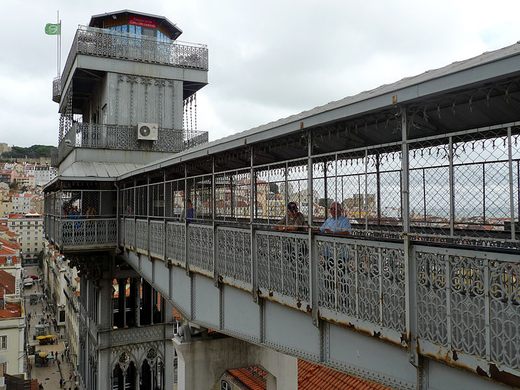"Hills: they’re great to look at and to look from, but climbing them can be a drag. For a city like Lisbon — which has, according to its well-worn nickname, no fewer than seven hills comprising its setting — this has long been a consideration when designing intracity transportation systems. The Santa Justa Lift is a gorgeous fin de siècle solution to this problem that is still in use to this day. In the heart of Lisbon, the lower Baixa Pombalina district is separated from the higher Bairro Alto by a sudden elevation change of 45 meters (147 feet). As early as the 1870s, a lift system was proposed to facilitate the climb. First consisting of an animal-powered inclined rail lift, work began in 1900 to replace that with a vertical elevator. Inaugurated by King Carlos in 1901 and fully operational in 1902, the Santa Justa Lift has been shuttling people up and down ever since. The elegant Neo-Gothic iron tower was designed by Raoul Mesnier du Ponsard, an engineer from Porto who was a student of Gustave Eiffel. Originally powered by a steam engine, the elevator motor was converted to cleaner electric operation in 1907. Lisbon still has some older funiculars (i.e., inclined tramways) still in operation, but Santa Justa is the only remaining vertical urban lift. Today, the Santa Justa Lift operates almost 16 hours a day, seven days a week, with one of its two steampunky wood-and-brass cars departing every few minutes. A platform above the upper terminus can be reached by a spiral staircase, where one can find a cafe offering commanding views of Rossio Square, the Baixa, and some of the cool stuff (like a castle!) on Lisbon’s other six hills." - ATLAS_OBSCURA




